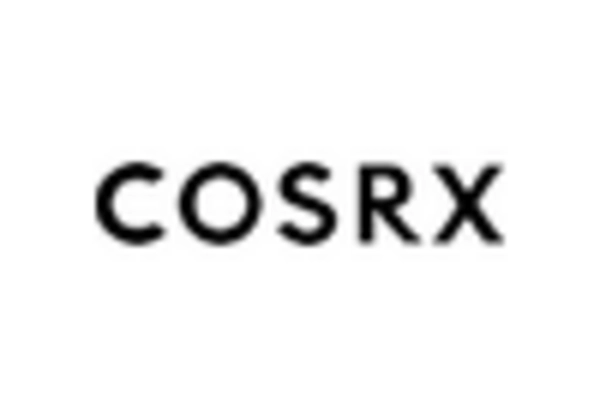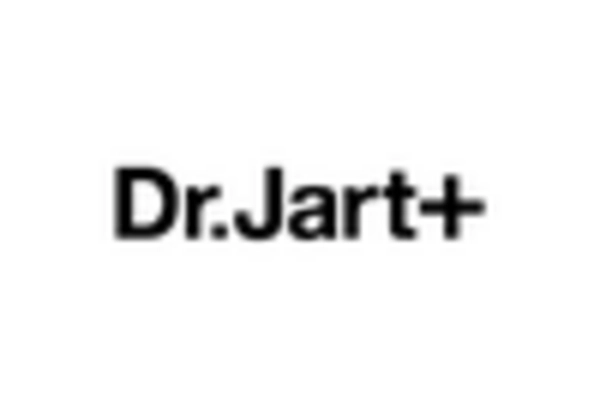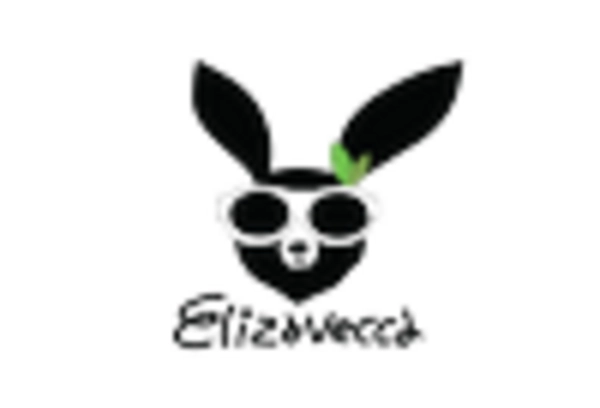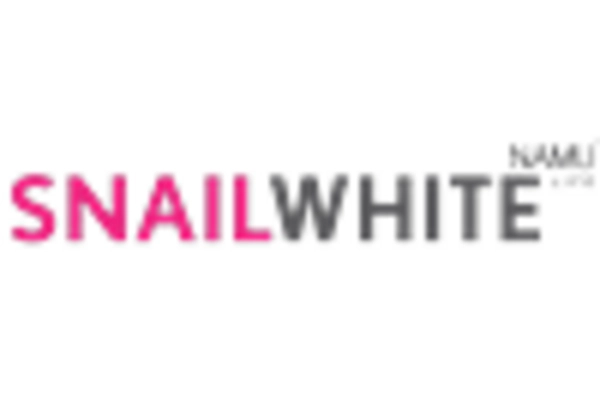Increasing Consumer Awareness
The Snail Mucin Skincare Market is experiencing a surge in consumer awareness regarding the benefits of snail mucin. This ingredient is recognized for its hydrating, anti-aging, and skin-repairing properties, which are increasingly appealing to consumers seeking effective skincare solutions. As more individuals become informed about the natural origins and efficacy of snail mucin, demand is likely to rise. Reports indicate that the market for snail mucin products has expanded significantly, with a notable increase in sales figures over the past few years. This trend suggests that as consumers prioritize ingredients with proven benefits, the Snail Mucin Skincare Market will continue to thrive.
Expansion of E-commerce Platforms
The rise of e-commerce platforms has significantly impacted the Snail Mucin Skincare Market, providing consumers with easier access to a variety of products. Online shopping has become a preferred method for purchasing skincare items, allowing consumers to explore different brands and formulations without geographical limitations. This trend is particularly beneficial for niche products like those containing snail mucin, which may not be widely available in physical retail stores. Data indicates that e-commerce sales in the beauty sector have surged, with many consumers opting for the convenience of online shopping. As e-commerce continues to expand, the Snail Mucin Skincare Market is poised for growth, reaching a broader audience.
Growing Demand for Natural Ingredients
The Snail Mucin Skincare Market is witnessing a growing demand for natural and organic ingredients in skincare formulations. Consumers are increasingly seeking products that are free from synthetic chemicals and harmful additives, favoring those that utilize natural components like snail mucin. This shift towards clean beauty aligns with broader consumer trends emphasizing health and wellness. Market data suggests that products containing natural ingredients are experiencing higher growth rates compared to conventional skincare items. As a result, brands that incorporate snail mucin into their offerings are likely to capture a larger share of the market, appealing to health-conscious consumers who prioritize ingredient transparency.
Rising Interest in Anti-Aging Solutions
The Snail Mucin Skincare Market is experiencing a notable increase in interest surrounding anti-aging solutions. As consumers age, there is a growing desire for products that can effectively address signs of aging, such as fine lines and wrinkles. Snail mucin is often touted for its regenerative properties, making it an attractive option for those seeking to maintain youthful skin. Market trends indicate that anti-aging products are among the fastest-growing segments within the skincare industry. This rising interest suggests that brands focusing on snail mucin formulations may find a lucrative opportunity in catering to this demographic, thereby enhancing their market presence.
Influence of Social Media and Beauty Influencers
The role of social media and beauty influencers in shaping consumer preferences cannot be overstated in the Snail Mucin Skincare Market. Platforms such as Instagram and TikTok have become vital channels for product promotion, where influencers showcase their skincare routines featuring snail mucin products. This visibility has led to a heightened interest among consumers, particularly younger demographics, who are more inclined to try products endorsed by trusted figures. The impact of social media marketing strategies is evident, as brands report increased engagement and sales following influencer collaborations. Consequently, the Snail Mucin Skincare Market is likely to benefit from this trend, as more consumers are drawn to products that are trending online.


















Leave a Comment